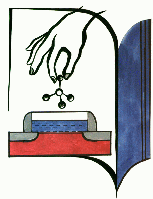 |
|||||
|
Home Nano & Giga 2002 |
|||||
|
Nano & Giga 2004 Web Site |
|||||
|
SWN2003 Workshop Phoenix, AZ |
|||||
| Moscow Visitor Tips | |||||
| FAQ | |||||
| Laptop Setup Tips | |||||
| Speakers | |||||
| Sponsors | |||||
|
Purchase Book of Abstracts |
|||||
| Abstract Submission | |||||
Proceedings
|
|||||
| Instructions for Authors | |||||
| Meeting Profile | |||||
| Conference Program | |||||
|
Nano & Giga Challenges
Summer School September 10-11, 2002
|
|||||
|
Satellite Symposium
Software Development September 15-16, 2002
|
|||||
| Exposition | |||||
| Accommodations | |||||
| Food and More | |||||
| City Transportation | |||||
| Social Program | |||||
| Visa and Travel Info | |||||
| Contact Information | |||||
| Financial Aid | |||||
| Awards | |||||
| Useful Links | |||||
| For Organizers Use |
 Printable Version
Printable Version
http://www.AtomicScaleDesign.Net/Moscow
Laptop Tips
We ask all speakers who plan to use their laptops and projector during presentation that they come to the meeting room before the session and try their setup. Also, the coffee breaks are a good time to try your computer configuration. Some tips are given below, but you should also be prepared that the only recourse is to use the good, old, overhead projector (though bulbs are known to burn during your presentation).
In theory, you should be able to plug a cable to the video output from your laptop, push a specially marked button on your laptop once or twice (slowly, so the display and video controller have a chance to synchronize), and the content of your laptop panel should appear on the screen. The button which switches between built-in laptop display and the external projector/monotor (CRT) has usually 3 positions: internal laptop only, external display only, both displays. Its position changes between laptop of different brands. On Dell Inspiron it is an F8 key, marked CRT/LCD which you need to depress together with the Fn (function) key.
Some video drivers also provide for switching to external display by choosing an option under Advanced menu in you Display "Settings" window and clicking your mouse.
In practice things often do not work smoothly and you should be prepared to do some tunning when you use the given projector lapton combination for the first time. Start from making resolution of your screen smaller as described below. On Windows98 try:
Start->Settings->ControlPanel->Display
though sometimes you can have a small icon in the lower right portion of your screen and right-clicking on this button will get you directly to the same place.
The display configuration window appears. At the top is a series of tabs. Click on the "Settings" tab and the Display Properties window will show up.
On your right site you have a "Screen area" slider. Please write down the resolution ("Screen area") which represents your regular settings. You will need this to restore your display to your usual settings.
Drag the slider to 800x600 pixels and click on Apply. It will warn you that it is about to resize the screen. Click on OK. It will then resize the screen and asks you if you want it. Say yes...
Check if your presentation looks well under this resolution. While obviously, at this setting you cannot show too much detail, this is not only the restriction of the popular LCD projectors but also a constraint of the medium. As a rule it is better to make several slides rather than pack too many details on a single image, as it will be unlegible for the audience.
You may also try the 1024x768 setting, since it is now supported by many higher end LCD Projectors.
Once you switched to the lower resolution, the external display should be able to synchronize itself easily with your laptop video adapter, after pressing CRT/LCD button once or twice (slowly!).
After presentation, you can restore the resolution of your laptop display by following the same steps and choosing the value which you wrote down.